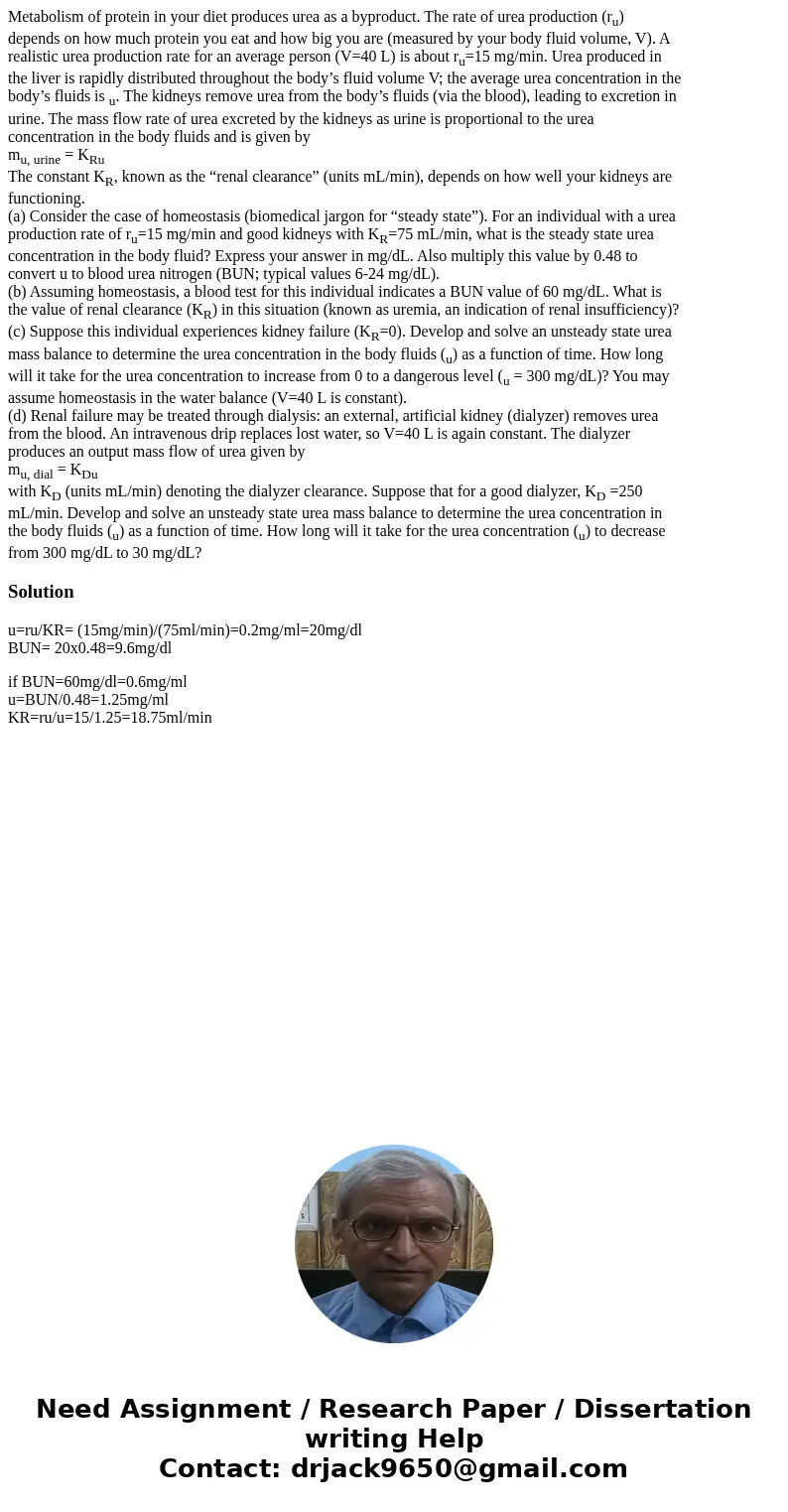Metabolism of protein in your diet produces urea as a byprod
Metabolism of protein in your diet produces urea as a byproduct. The rate of urea production (ru)
depends on how much protein you eat and how big you are (measured by your body fluid volume, V). A
realistic urea production rate for an average person (V=40 L) is about ru=15 mg/min. Urea produced in
the liver is rapidly distributed throughout the body’s fluid volume V; the average urea concentration in the
body’s fluids is u. The kidneys remove urea from the body’s fluids (via the blood), leading to excretion in
urine. The mass flow rate of urea excreted by the kidneys as urine is proportional to the urea
concentration in the body fluids and is given by
mu, urine = KRu
The constant KR, known as the “renal clearance” (units mL/min), depends on how well your kidneys are
functioning.
(a) Consider the case of homeostasis (biomedical jargon for “steady state”). For an individual with a urea
production rate of ru=15 mg/min and good kidneys with KR=75 mL/min, what is the steady state urea
concentration in the body fluid? Express your answer in mg/dL. Also multiply this value by 0.48 to
convert u to blood urea nitrogen (BUN; typical values 6-24 mg/dL).
(b) Assuming homeostasis, a blood test for this individual indicates a BUN value of 60 mg/dL. What is
the value of renal clearance (KR) in this situation (known as uremia, an indication of renal insufficiency)?
(c) Suppose this individual experiences kidney failure (KR=0). Develop and solve an unsteady state urea
mass balance to determine the urea concentration in the body fluids (u) as a function of time. How long
will it take for the urea concentration to increase from 0 to a dangerous level (u = 300 mg/dL)? You may
assume homeostasis in the water balance (V=40 L is constant).
(d) Renal failure may be treated through dialysis: an external, artificial kidney (dialyzer) removes urea
from the blood. An intravenous drip replaces lost water, so V=40 L is again constant. The dialyzer
produces an output mass flow of urea given by
mu, dial = KDu
with KD (units mL/min) denoting the dialyzer clearance. Suppose that for a good dialyzer, KD =250
mL/min. Develop and solve an unsteady state urea mass balance to determine the urea concentration in
the body fluids (u) as a function of time. How long will it take for the urea concentration (u) to decrease
from 300 mg/dL to 30 mg/dL?
Solution
u=ru/KR= (15mg/min)/(75ml/min)=0.2mg/ml=20mg/dl
BUN= 20x0.48=9.6mg/dl
if BUN=60mg/dl=0.6mg/ml
u=BUN/0.48=1.25mg/ml
KR=ru/u=15/1.25=18.75ml/min

 Homework Sourse
Homework Sourse